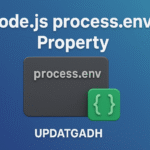
Mastering SQL for Data Analytics and Interview Success
Mastering SQL for Data Analytics and Interview Success
If you’re venturing into data analytics or preparing for SQL-related job interviews, you’re on a journey that requires both theoretical understanding and hands-on practice. SQL (Structured Query Language) is the backbone of data manipulation and retrieval in databases, making it an essential skill for data analysts, data scientists, and software developers alike. This blog post will guide you through the crucial topics to focus on to master SQL for data analytics and ace those interviews.
1. Start with the Fundamentals
Before diving into complex queries and performance tuning, you need a solid grasp of basic SQL commands. These foundational commands are the building blocks of any SQL query:
- SELECT: Retrieve data from a database.
- FROM: Specify the table(s) to query.
- WHERE: Filter records based on specific conditions.
- GROUP BY: Group rows sharing a property so that aggregate functions can be applied to each group.
- HAVING: Filter groups according to a given condition.
- LIMIT: Restrict the number of rows returned by the query.
Sample Code:
SELECT first_name, last_name, COUNT(*)
FROM employees
WHERE department = 'Sales'
GROUP BY first_name, last_name
HAVING COUNT(*) > 5
LIMIT 10;
This query selects the first and last names of employees in the Sales department, groups them, filters to show only those with more than 5 entries, and limits the results to the first 10 rows.
2. Master Advanced Querying Techniques
Once you’re comfortable with the basics, it’s time to move on to more advanced querying techniques. These techniques will enable you to handle more complex data scenarios and improve your analytical capabilities:
- Joins: Master different types of joins—LEFT JOIN, RIGHT JOIN, INNER JOIN, SELF JOIN, and CROSS JOIN—to combine data from multiple tables.
- Aggregate Functions: Learn to use SUM(), MAX(), MIN(), and AVG() to perform calculations on your data.
- Window Functions: Understand ROW_NUMBER(), RANK(), DENSE_RANK(), LEAD(), LAG(), and SUM() OVER() for more granular data analysis.
- Conditional Logic and Pattern Matching: Use CASE statements for applying conditional logic within queries and LIKE for pattern matching.
- Complex Queries and Data Transformation: Practice writing subqueries for nested queries, and use Common Table Expressions (CTE) for more modular and readable queries. Also, explore the use of temporary tables for performance optimization.
Sample Code: Using Joins and Aggregate Functions
SELECT e.first_name, e.last_name, d.department_name, SUM(s.salary) as total_salary
FROM employees e
INNER JOIN salaries s ON e.employee_id = s.employee_id
INNER JOIN departments d ON e.department_id = d.department_id
GROUP BY e.first_name, e.last_name, d.department_name
ORDER BY total_salary DESC;
This query retrieves the total salary of each employee grouped by their department, using INNER JOIN to combine data from multiple tables.
Sample Code: Using Window Functions
SELECT employee_id, salary,
RANK() OVER (ORDER BY salary DESC) as salary_rank,
LEAD(salary, 1) OVER (ORDER BY salary DESC) as next_salary
FROM salaries;
This query ranks employees based on their salary and also shows the salary of the next employee in the ranking.
3. Optimize Your Queries for Performance
Writing correct SQL queries is essential, but writing optimized queries is what will set you apart. Performance tuning is a critical skill, especially when dealing with large datasets:
- Query Optimization Techniques: Learn various strategies to optimize your SQL queries to run faster and more efficiently.
- Indexing: Understand different indexing strategies to enhance query performance, especially on large datasets.
Sample Code: Using Indexes
CREATE INDEX idx_department ON employees(department_id);
This command creates an index on the department_id column in the employees table, which can speed up queries filtering or joining on this column.
4. Practical Applications: Hands-On Learning
To reinforce what you’ve learned, practical application is key. One effective way to practice is by solving problems and case studies:
- Ankit Bansal’s YouTube Channel: Solve real-world SQL problems and case studies available on Ankit Bansal’s YouTube channel. This will help you apply what you’ve learned in real-world scenarios.
- Learning Tip: For each topic, find a 10-15 minute YouTube tutorial, watch it, and practice along. This hands-on approach solidifies your understanding.
Sample Code: Solving a Practical Problem
-- Finding the top-selling products in each category
SELECT p.product_name, c.category_name, SUM(o.quantity) as total_sold
FROM products p
INNER JOIN orders o ON p.product_id = o.product_id
INNER JOIN categories c ON p.category_id = c.category_id
GROUP BY p.product_name, c.category_name
ORDER BY total_sold DESC;
This query finds the top-selling products in each category by joining the products, orders, and categories tables and summing up the quantities sold.
5. Dive into End-to-End Projects
Working on end-to-end projects is one of the best ways to gain practical experience:
- Data Analysis Projects: Search for “data analysis end-to-end project using SQL” on YouTube and follow along. Practicing the entire process—from data extraction to analysis—will give you a comprehensive understanding of how SQL is used in real-world projects.
Sample Code: Start of an End-to-End Project
-- Extracting data for analysis
SELECT customer_id, order_date, total_amount
FROM orders
WHERE order_date BETWEEN '2023-01-01' AND '2023-12-31';
This query extracts customer orders made within a specific year, which can be the starting point for deeper analysis.
6. Real-World Data Analysis: Applying Your Skills
It’s important to apply your SQL skills to real-world data analysis:
- Sample Datasets: Work on sample datasets to perform comprehensive data analysis. This will help you understand how to handle real-world data, which often involves cleaning, transforming, and analyzing data to derive insights.
Sample Code: Cleaning and Analyzing Data
-- Cleaning data by removing duplicates
DELETE FROM orders
WHERE order_id IN (
SELECT order_id
FROM (
SELECT order_id, ROW_NUMBER() OVER (PARTITION BY customer_id, order_date ORDER BY order_id) as row_num
FROM orders
) temp
WHERE row_num > 1
);
This query removes duplicate orders by identifying them with a ROW_NUMBER() window function.
7. Data Cleaning and Preparation
Data cleaning and preparation are crucial steps in the data analysis process:
- Techniques for Cleaning and Preparing Data: Learn how to handle missing values and outliers, and practice joining data from multiple tables and databases.
- Understanding Data Relationships: Understand how to handle different types of data relationships to ensure accurate data analysis.
Sample Code: Handling Missing Values
-- Replacing missing values with a default value
UPDATE employees
SET salary = 0
WHERE salary IS NULL;
This query updates the salary field to 0 where it is currently missing (NULL).
8. Advanced Data Manipulation and Reporting
Take your SQL skills to the next level by learning advanced data manipulation techniques:
- Advanced SQL Functions: Use advanced SQL functions to transform raw data into meaningful insights.
- Building Reports and Dashboards: Learn how to build reports and dashboards using SQL and tools like Power BI to effectively present data insights.
Sample Code: Advanced Data Manipulation
-- Calculating cumulative sales
SELECT order_date,
SUM(total_amount) OVER (ORDER BY order_date) as cumulative_sales
FROM orders;
This query calculates the cumulative sales over time using a window function.
9. Interview Preparation: Practice Makes Perfect
Finally, prepare for your SQL interviews by practicing common interview questions and challenges:
- SQL Exercises and Coding Challenges: Work on SQL exercises and coding challenges to sharpen your skills.
- Interview Resources: Use essential SQL interview resources available on platforms like @ProjectsWithSourceCode to help you prepare.
Sample Code: Practice Interview Question
-- Finding employees who earn more than the average salary
SELECT first_name, last_name, salary
FROM employees
WHERE salary > (SELECT AVG(salary) FROM employees);
- Complete Python Course : Click here
- Free Notes :- Click here
- New Project :-https://www.youtube.com/@Decodeit2
- How to setup this Project Complete video – Click here
data analytics,data analytics for beginners,data analytics course,data analytics career,data analytics tutorial,learn data analytics,data analytics full course,data analytics with python,what is data analytics,data analytics tutorial for beginners,how to learn data analytics,data analytics roadmap,learn data analytics from scratch,data analytics course for beginners,data analytics tutorial free,data analytics for beginners full course,data analytics with r
Share this post if you found it helpful! 👍❤️
Good luck on your journey to mastering SQL!










Post Comment